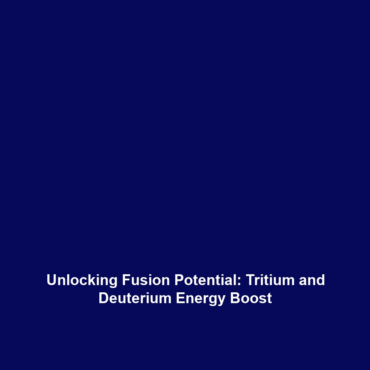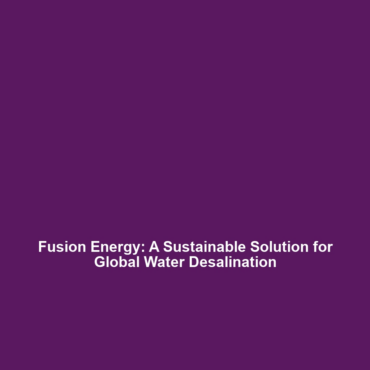Heat Resistance in Fusion Reactors: A Key to Fusion Energy
Introduction
Heat resistance plays a pivotal role in the development of fusion energy, as the plasma within fusion reactors reaches extraordinarily high temperatures, often exceeding millions of degrees Celsius. The materials used in these reactors must endure not only these extreme temperatures but also significant radiation. Understanding the dynamics of heat resistance is essential for advancing fusion technology and achieving sustainable, clean energy sources. This article delves into the critical aspects of heat resistance and its significance within fusion energy.
Key Concepts of Heat Resistance in Fusion Energy
To comprehend the importance of heat resistance, we must explore several key concepts:
Plasma State and Behavior
Plasma, the fourth state of matter, consists of ionized gases that can conduct electricity and are influenced by magnetic and electric fields. The temperatures in fusion reactors create a challenging environment for materials, necessitating the development of innovative substances that can withstand heat.
Material Properties
Materials used in fusion reactors must possess unique properties, including:
- High melting points
- Resistance to radiation-induced damage
- Mechanical strength at elevated temperatures
Applications of Heat Resistant Materials
Applications of heat resistance in fusion energy extend beyond reactors. These materials are being used in various engineering components, such as:
- First wall structures that face direct plasma contact
- Blankets designed for breeding tritium fuel
- Cooling systems to manage excessive heat
Current Challenges in Heat Resistance Research
Despite the progress, several challenges persist in the study and application of heat resistance in fusion reactors:
- Material Degradation: Exposure to extreme conditions leads to degradation over time, limiting the lifespan of components.
- Cost Implications: Developing advanced materials often involves significant research costs and time.
- Scalability: Ensuring that materials can be produced at scale without compromising quality remains a hurdle.
Future Research and Innovations
Looking ahead, several exciting research directions are underway to enhance heat resistance in fusion applications:
- Developing novel composite materials that integrate high-temperature superconductors.
- Advancements in nanotechnology to improve thermal conductivity and reduce weight.
- Exploring ceramics with extreme temperature tolerance for reactor components.
Conclusion
In conclusion, understanding heat resistance within the context of fusion energy is vital for the development of sustainable energy solutions. As research continues to uncover new materials and technologies, the prospects for fusion reactors become increasingly promising. For more information on the advancements in fusion energy, consider exploring our articles on related topics such as sustainable energy technologies and current fusion research initiatives.









